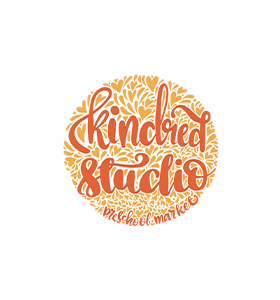25 years of pruritus medicine – a new and exciting branch of Dermatology
Main article

By Prof. Dr. med. Dr. h.c. Thomas A. Luger
WCD Ambassador from Germany
Itch is one of the most important host-protecting alarm sensations of the skin in reflex to environmental substances. However, the neuronal mechanisms underlying itch generation also respond to many endogenous pruritogens leading to the pathological condition of chronic pruritus (CP). Defined as pruritus lasting for 6 weeks or longer, CP is a frequent and burdening global condition that affects one sixth of the population (1, 2). The pathophysiology, underlying etiology, clinical manifestation, and response to therapy in CP varies from patient to patient, making research and medical management challenging (2-4). 25 years ago, itch- specific fibers have been discovered for the first time by a German group of researchers (5). This finding had a huge impact in understanding the symptom and separating it from pain. Since that time, pruritus research was considered as an own medical and research field and groundbreaking novel data on itch mechanisms have been published (example see 6-8). Neuroimmune mechanisms have been discovered to play a dominant role in cutaneous itch generation in many inflammatory dermatoses (4). This refers to a bidirectional communication between T-Cells (Th1, Th2, Th3), eosinophils, basophils, mast cells and sensory nerve fibers of A and C-fiber classes. Neurons produce and release neuropeptides and thus may foster inflammatory signals which play a role in neurogenic inflammation, and enhancement of IL-13 and IL-17 pathways (9). Clinically, this is of relevance in urticaria, psoriasis and atopic dermatitis. Interestingly, on the long run, nerve fibers themselves change anatomy, structure (Figure 1) and function in an inflammatory micromilieu (10). The latter paper was published by German researchers, namely Sonja Ständer and her group from Münster University Hospital (Figure 2). They focus on the impact of pruritus and especially scratching on cutaneous nerves. Interestingly, nerve fibers are diminished in response to the itch-scratch cycle but increase their function. This is especially true for chronic nodular prurigo (CNPG), an inflammatory dermatosis and a sample entity for a severe itch-scratch cycle (11). Prof. Dr.Dr.h.c. Sonja Ständer the head of the Competence Center for Pruritus at the Department of Dermatology, University Hospital Muenster, Germany, and her group showed complex neuroanatomical changes in CNPG contributing to chronicity of itching; they have also been the first to perform clinical trials in this disease. Nowadays, a lot of trials have been performed in CNPG. Nemolizumab, an antibody which binds to IL-31R is one example and was shown to led to rapid and significant itch reduction (12). Binding to OSMR, which forms a heterodimer with IL-31RA, Vixarelimab is being investigated in phase II clinical trials enrolling patients with CNPG (13). While studies addressing the neuropeptide receptor neurokinin 1 have not been successful, current studies demonstrated efficacy of nalbuphine (oral opioid modulator), and dupilumab (anti interleukin 4 Ra antibody) in this entity (13).
In sum, pruritus medicine is an exciting novel field in dermatology with abundant clinical, translational, and basic research activities, establishment of clinical standards including guidelines, terminology, and outcome measurements. In addition, due to the diverse etiologies of CP, a multidisciplinary exchange is necessary to guide management of patients what makes this field even more attractive.
References
1. Hay RJ, Johns NE, Williams HC, Bolliger IW, Dellavalle RP, Margolis DJ, et al. The global burden of skin disease in 2010: an analysis of the prevalence and impact of skin conditions. J Invest Dermatol 2014; 134: 1527-1534.
2. Ständer S, Weisshaar E, Mettang T, Szepietowski JC, Carstens E, Ikoma A, Bergasa NV, Gieler U, Misery L, Wallengren J, Darsow U, Streit M, Metze D, Luger TA, Greaves MW, Schmelz M, Yosipovitch G, Bernhard JD. Clinical classification of itch: a position paper of the International Forum for the Study of Itch. Acta Derm Venereol. 2007;87(4):291-4.
3. Weisshaar E, Szepietowski JC, Dalgard FJ, Garcovich S, Gieler U, Giménez-Arnau AM, Lambert J, Leslie T, Mettang T, Misery L, Şavk E, Streit M, Tschachler E, Wallengren J, Ständer S. European S2k Guideline on Chronic Pruritus. Acta Derm Venereol 2019; 99: 469-506.
4. Cevikbas F, Lerner EA. Physiology and Pathophysiology of Itch. Physiol Rev. 2020; 100: 945-982
5. Schmelz M, Schmidt R, Bickel A, Handwerker HO, Torebjörk HE. Specific C-receptors for itch in human skin. J Neurosci. 1997 Oct 15;17(20):8003-8.
6. Sun YG, Chen ZF. A gastrin-releasing peptide receptor mediates the itch sensation in the spinal cord. Nature. 2007;448(7154):700-3. 7. Oetjen LK, Mack MR, Feng J, Whelan TM, Niu H, Guo CJ, Chen S, Trier AM, Xu AZ, Tripathi SV, Luo J, Gao X, Yang L, Hamilton SL, Wang PL, Brestoff JR, Council ML, Brasington R, Schaffer A, Brombacher F, Hsieh CS, Gereau RW
4th, Miller MJ, Chen ZF, Hu H, Davidson S, Liu Q, Kim BS. Sensory Neurons Co-opt Classical Immune Signaling Pathways to Mediate Chronic Itch. Cell. 2017 Sep 21;171(1):217-228.e13.
8. Hill RZ, Loud MC, Dubin AE, Peet B, Patapoutian A. PIEZO1 transduces mechanical itch in mice. Nature. 2022;607(7917):104-110.
9. Pinho-Ribeiro FA, Verri Jr WA, Chiu IM. Nociceptor Sensory Neuron-Immune Interactions in Pain and Inflammation. Trends Immunol 2017 Jan;38(1):5-19.
10. Pogatzki-Zahn EM, Pereira MP, Cremer A, Zeidler C, Dreyer T, Riepe C, Wempe C, Lotts T, Segelcke D, Ringkamp M, Kremer AE, Agelopoulos K, Ständer S. Peripheral Sensitization and Loss of Descending Inhibition Is a Hallmark of Chronic Pruritus. J Invest Dermatol. 2020 Jan;140(1):203-211.e4.
11. Pereira MP, Steinke S, Zeidler C, Forner C, Riepe C, Augustin M, Bobko S, Dalgard F, Elberling J, Garcovich S, Gieler U, Gonçalo M, Halvorsen JA, Leslie TA, Metz M, Reich A, Şavk E, Schneider G, Serra-Baldrich E, Ständer HF, Streit M, Wallengren J, Weller K, Wollenberg A, Bruland P, Soto-Rey I, Storck M, Dugas M, Weisshaar E, Szepietowski JC, Legat FJ, Ständer S; EADV Task Force Pruritus group members. European academy of dermatology and venereology European prurigo project: expert consensus on the definition, classification, and terminology of chronic prurigo. J Eur Acad Dermatol Venereol. 2018 Jul;32(7):1059-1065.
12. Ständer S, Yosipovitch G, Legat FJ, Lacour JP, Paul C, Narbutt J, Bieber T, Misery L, Wollenberg A, Reich A, Ahmad F, Piketty C. Trial of Nemolizumab in Moderate-to-Severe Prurigo Nodularis.
13. Agelopoulos K, Pereira MP, Wiegmann H, Ständer S. Cutaneous neuroimmune crosstalk in pruritus. Trends Mol Med. 2022 Jun;28(6):452-462.
















